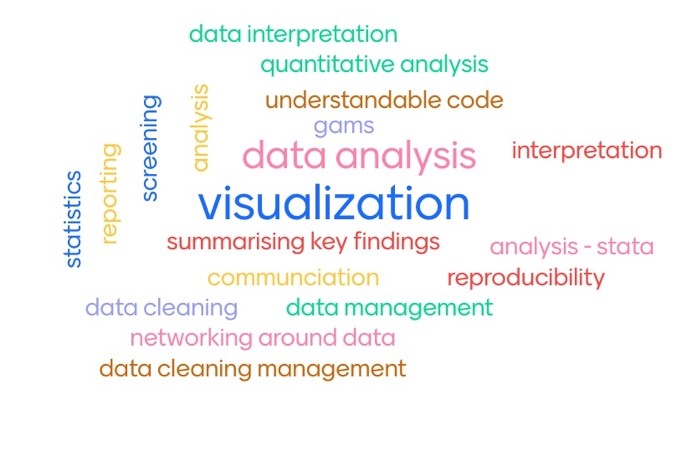In June 2023, DataDENT participated in a side session at the Agriculture, Nutrition and Health Academy Week (ANH2023) held in Malawi and online. The session, Going Deeper with Data and Methods to Improve Understanding of Food and Nutrition Security Linkages, was a response to the 2022 Global Nutrition Report, which advocates for greater attention to achieving Sustainable Development Goal 2 to end hunger through achieving food security and improved nutrition. We aimed to delve further into data and methodologies to enhance the understanding of food and nutrition security linkages.
What do we know about appropriate metrics to assess food security and nutrition?
We provided a synthesis of evidence on food security and nutrition linkages, preliminary results from a systematic review of published literature, and a draft analytical framework of pathways linking food insecurity to malnutrition. The covariates in the framework were categorized based on 1) factors influencing malnutrition outcomes in the UNICEF Maternal and Child Nutrition Framework, and 2) the pathways connecting agriculture and nutrition, which include agricultural production, income, and women’s empowerment. Specific metrics measuring food and nutrition security were mapped to the framework based on the publications reviewed.
Two primary conclusions are identified regarding the best use of food security metrics:
- Use more than one indicator to adequately measure food security, as each indicator assesses some but not all dimensions of food insecurity
- Ensure that when selecting an indicator to measure a dimension of food security that the indicator has been validated to measure the intended dimension of assessment
There is agreement about the need for more datasets that measure both food insecurity and malnutrition and for more individuals with adequate training to design, collect, analyze, and interpret these types of data.
What knowledge and skills are needed to use food security and nutrition data effectively?
With a focus on expanding the cadre of well-trained individuals to work with food and nutrition data, DataDENT is leading an effort to define core competencies in food and nutrition data literacy. Core competencies are a combination of knowledge and skills required to be successful in a job or activity. Data literacy reflects “an individual’s ability to read, understand, and utilize data in different ways.”
Data on food security and nutrition are complex. Nutrition is multisectoral, malnutrition is multifactorial, and food security is multidimensional. These data are controlled by different actors and are collected in various ways through surveys like the Demographic and Health Surveys (DHS) and through administrative systems. Individuals need specific knowledge and skills to apply and use diverse population-level food and nutrition indicators, including anthropometry, anemia prevalence, micronutrient status, diet quality, food environments, food security, and cross-sector intervention coverage.
As shown in Figure 1, there are existing resources on related core competencies such as monitoring and evaluation, public health nutrition, and even for senior technical staff in food security and nutrition. DataDENT plans to add to these knowledge areas by developing core competencies that are specific to food security and nutrition data. DataDENT aims to collaborate with other institutions and initiatives to assemble, validate and disseminate a set of core competencies that identify the knowledge and skills required to be “nutrition data literate” relative to different functions. These core competencies can be used to inform position descriptions, design assessment tools, and produce training curricula.

Figure 1. Core competencies for food security and nutrition data literacy
DataDENT will use the Nutrition Data Value Chain and the UNICEF Maternal and Child Nutrition Framework to inform and organize the core competencies and will apply a human-centered design approach to develop personas to meet the needs of food security and nutrition actors across sectors.
The interactive session asked participants to describe the most valuable data skills they had learned on the job or during their training. Participant responses contributed to creating a word cloud (Figure 2). Data management and cleaning, data analysis and interpretation, and reporting and visualization were common responses.

Figure 2. Screenshot of word cloud representing valuable data skills training
DataDENT collaborates with other organizations, like the European Commission – Joint Research Centre, to produce resources on core competencies for food security and nutrition data literacy and encourages more individuals and organizations to join the movement. In addition, DataDENT plans to engage with individuals working in food security and nutrition data through the Data for Nutrition Community of Practice to gather more data to create personas, validate competencies, and test assessment tools. Please join the community and join DataDENT in this work.
